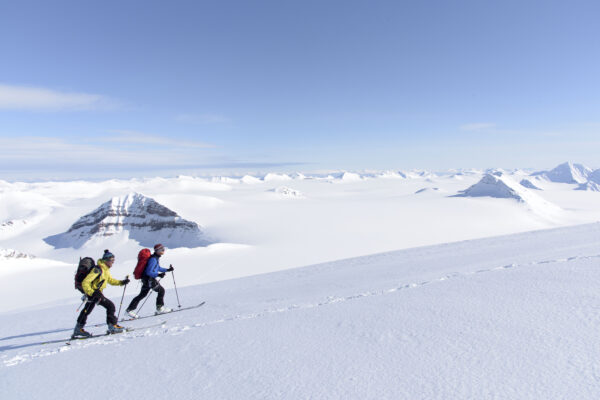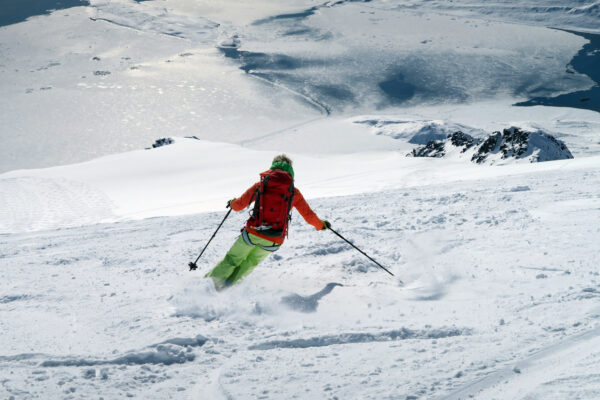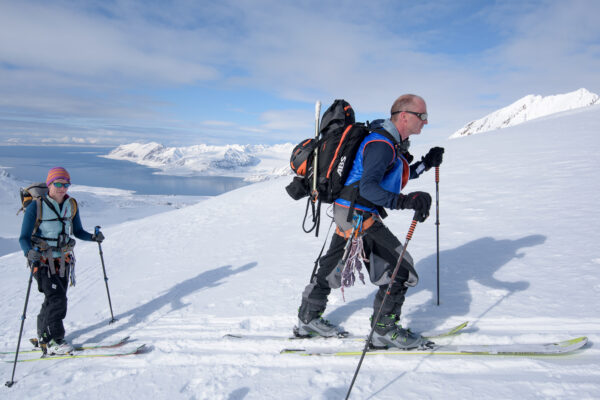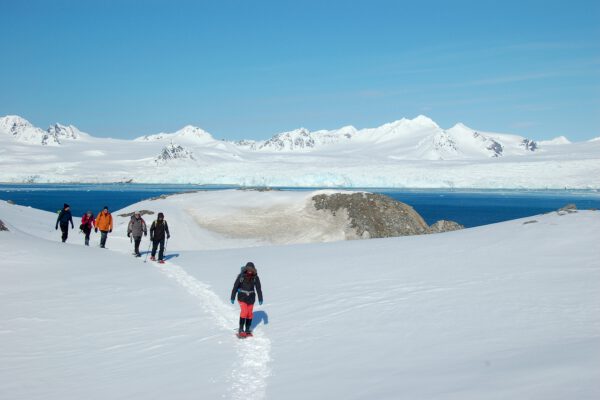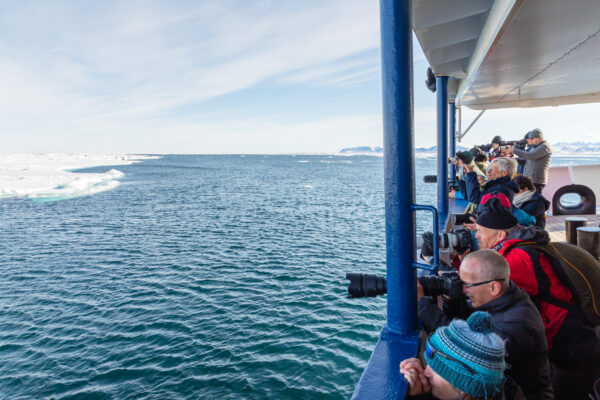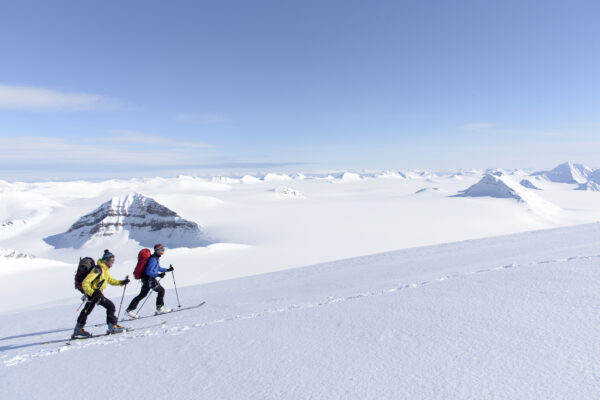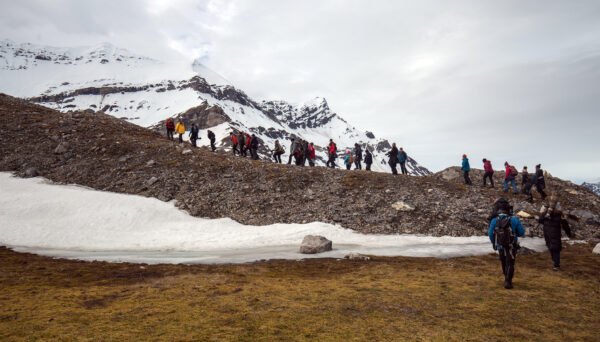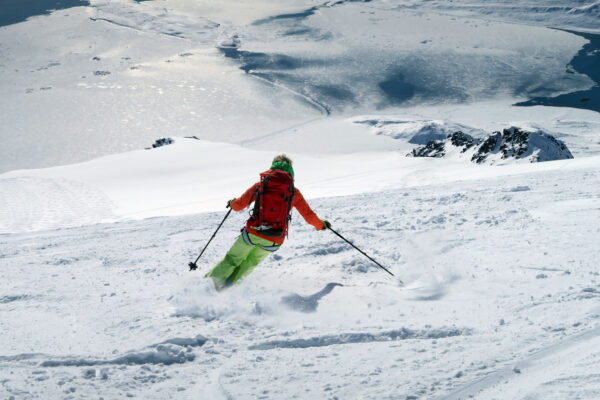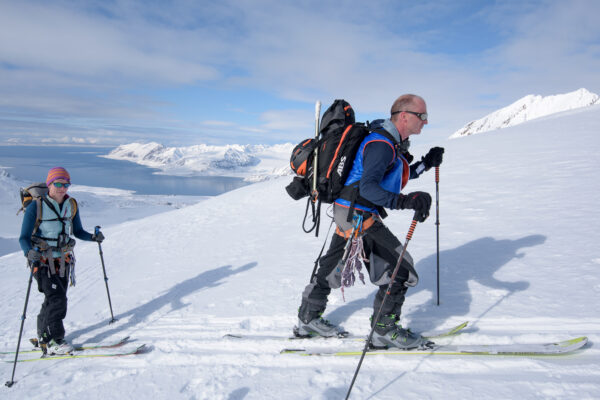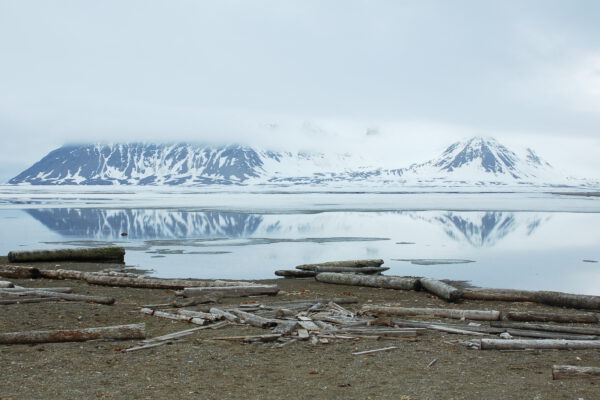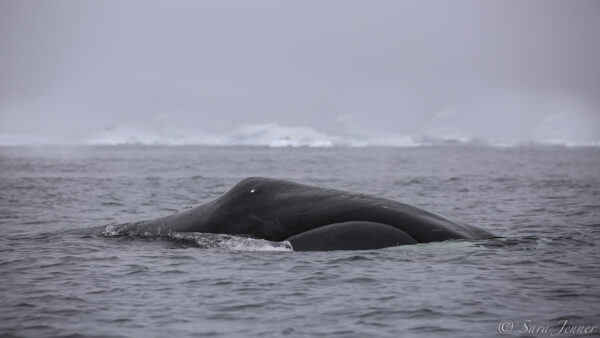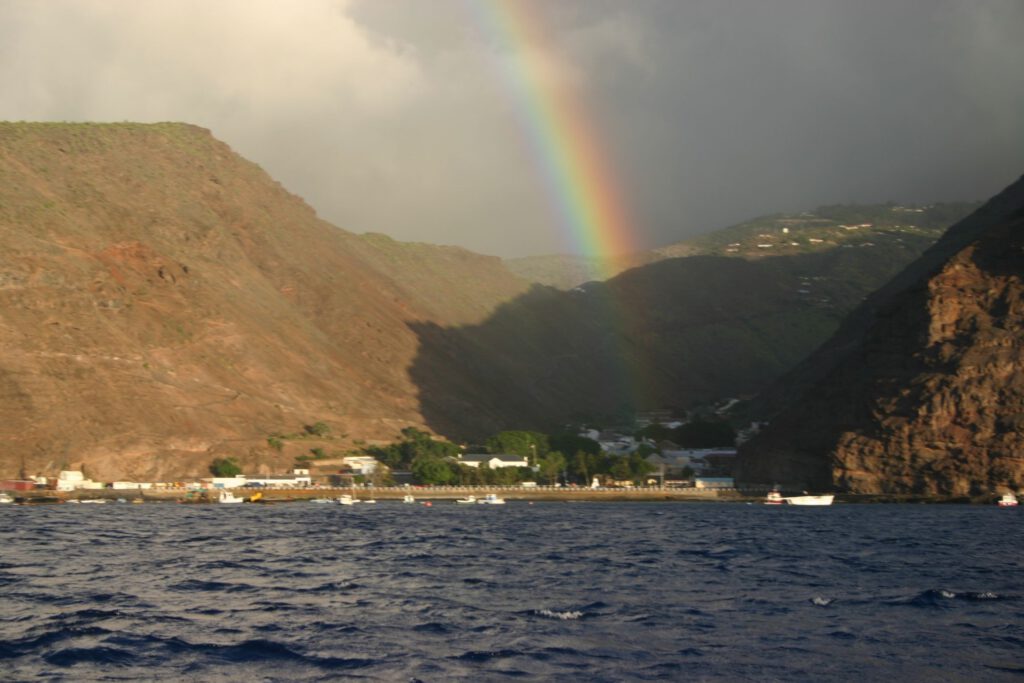The Atlantic Odyssey cruise visits some of the remotest islands in the world, crossing the migratory paths of Arctic Terns, Long-tailed Skuas, other birds, and a variety of whales as they make their annual expeditions north for the breeding season.
Trip Itinerary
Day 1
Your voyage begins where the world drops off: Ushuaia, Argentina, said to be the southernmost city on the planet, located on the far southern tip of South America. Starting in the afternoon, we embark from this small resort town on Tierra del Fuego (nicknamed “The End of the World”) and sail the mountainous Beagle Channel for the rest of the evening.
Day 2 – 4
Today we are en route to South Georgia. After passing the Antarctic Convergence, which is a natural boundary formed when north-flowing cold waters collide with warmer sub-Antarctic waters, we enter the circum-Antarctic upwelling zone. Not only does the marine life change, the bird life changes, too: A variety of albatrosses and petrels show up, along with Cape pigeons and southern fulmars.
Day 5 – 7
Our aim today is to visit some of the world’s top king penguin rookeries. This time of year you have a good chance of seeing these animals nesting on eggs, with their chicks nearby. The rookeries are sometimes overflowing, with penguins traveling to and from the beach.
Possible visits in this region include:
Salisbury Plain, St. Andrews Bay, Gold Harbour – Here you can see not only the massive king penguin colony, but also elephant seals and limitless fur seal pups playing in the surf.
Grytviken – We also have the opportunity to check out this abandoned whaling station, where king penguins walk the streets and elephant seals lie around like they own the place – because they basically do! You might also see the South Georgia Museum as well as Shackleton’s grave here.
Cooper Bay – This is a fine place for a Zodiac cruise, and this bay also houses a rookery of macaroni penguins. King penguins, pintails, and giant petrels may also appear here.
Moltke Harbour – Located in Royal Bay, this scenic spot gives you the chance to see the huge king penguin colony that lives here.
Day 8– 12
A pleasant tailwind often accompanies the vessel through the westerlies, and on both sides of the Antarctic Convergence, you might see large numbers of Antarctic and sub-Antarctic seabirds.
Day 13
Today we plan to approach Gough Island for a Zodiac cruise in Quest Bay, if the weather permits. Here you might see northern rockhopper penguins and sub-Antarctic fur seals. In previous years, it has been possible for us to circumnavigate most of Gough Island’s 33-mile circumference, taking in this area’s splendid scenery and abundant wildlife.
Day 14 – 17
The remote islands of Tristan da Cunha are famed for their plentiful bird populations, which include rockhopper penguins, several species of albatross, petrels, skuas, terns, and many others. Our goal during this stage of our voyage is to visit the small settlement on the west side of the main island, but we might also land at Seal Bay on the south side of Tristan da Cunha or at Sandy Point on the east side.
In these stunning locations, you could encounter such exotic wildlife as yellow-nosed albatrosses and sub-Antarctic fur seals, all while exploring a rarely visited spot. We also intend to land at Nightingale Island and Inaccessible Island, both of which offer great views of beautiful seabirds ranging from yellow-nosed albatrosses to brown noddies.
Two days are reserved at Tristan da Cunha in case of bad weather, but please remember that nature determines our itineraries here: Since beginning the Atlantic Odyssey cruise in 1998, adverse weather led to the cancellation of 35% of Tristan da Cunha landings. If we have to divert for safety reasons, we will find good alternatives.
Day 18 – 21
Seabirds and dolphins indigenous to this region often follow the vessel.
Day 22 – 24
After we land at Jamestown on Saint Helena Island, you will have the opportunity to enjoy the area’s local culture, pleasant climate, and endemic bird life. You can pay a visit to Longwood House, where Napoleon died in exile; walk the 699-step Jacob’s Ladder, if you’re feeling ambitious; or snorkel the shallows offshore, seeing multitudes of tropical and subtropical fish.
Please note: You have the option to disembark and fly home from Jamestown, if flights are available. In the evening, we will depart for Ascension Island and Praia, Cape Verde, where you can also disembark. Make sure to book voyage PLA33-26 if you want to fly out from Praia.
Please Note...
All itineraries are for guidance only. Programs may vary depending on ice, weather, and wildlife conditions. Landings are subject to site availabilities, permissions, and environmental concerns per IAATO regulations. Official sailing plans and landing slots are scheduled with IAATO prior to the start of the season, but the expedition leader determines the final plan. Flexibility is paramount for expedition cruises. The average cruising speed for our vessel is 10.5 knots.
Cabin Information
| Ship name | Cabin Name | Price | Sale Price | Departs on | Returns on |
|---|---|---|---|---|---|
| m/v Plancius | Quadruple Porthole | $9,050 | NA | Apr 1st, 2026 | Apr 24th, 2026 |
| m/v Plancius | Triple Porthole | $11,350 | NA | Apr 1st, 2026 | Apr 24th, 2026 |
| m/v Plancius | Twin Porthole | $11,350 | NA | Apr 1st, 2026 | Apr 24th, 2026 |
| m/v Plancius | Twin Window | $11,850 | NA | Apr 1st, 2026 | Apr 24th, 2026 |
| m/v Plancius | Twin Deluxe | $12,850 | NA | Apr 1st, 2026 | Apr 24th, 2026 |
| m/v Plancius | Superior | $13,750 | NA | Apr 1st, 2026 | Apr 24th, 2026 |
| m/v Plancius | Quadruple Porthole | $9,050 | NA | Apr 1st, 2026 | Apr 24th, 2026 |
| m/v Plancius | Triple Porthole | $11,350 | NA | Apr 1st, 2026 | Apr 24th, 2026 |
| m/v Plancius | Twin Porthole | $11,350 | NA | Apr 1st, 2026 | Apr 24th, 2026 |
| m/v Plancius | Twin Window | $11,850 | NA | Apr 1st, 2026 | Apr 24th, 2026 |
| m/v Plancius | Twin Deluxe | $12,850 | NA | Apr 1st, 2026 | Apr 24th, 2026 |
| m/v Plancius | Superior | $13,750 | NA | Apr 1st, 2026 | Apr 24th, 2026 |

